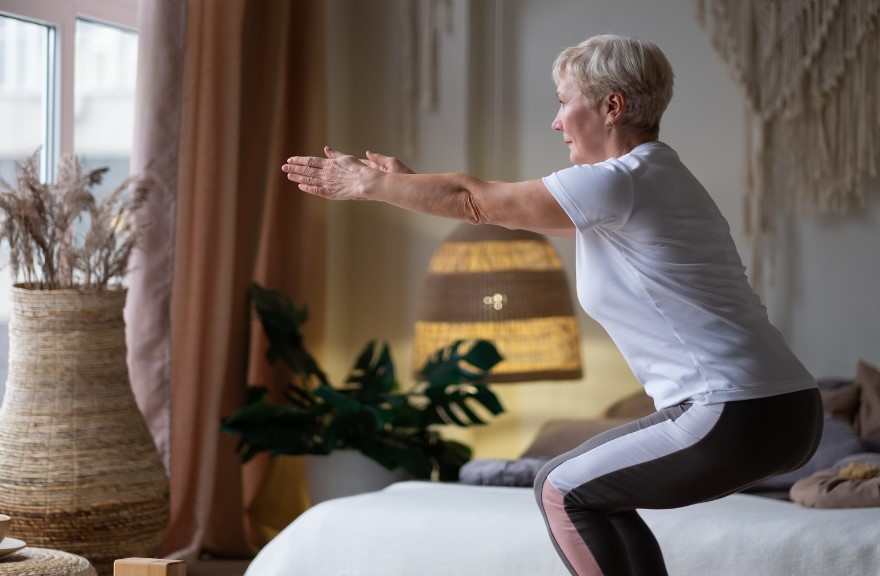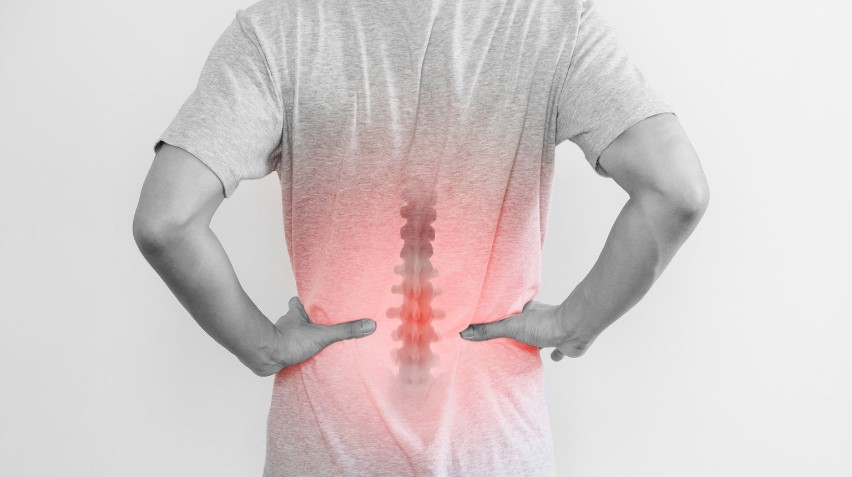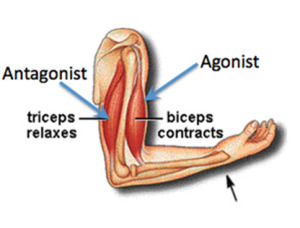As we journey through life’s various stages and into retirement, the significance of muscle health becomes increasingly apparent, affecting not just athletes or those in physically demanding jobs but all of us.
Take the quadriceps, for example; these muscles are not just essential for athletes but play a crucial role in basic daily activities like walking and climbing stairs. Weak quadriceps can lead to knee instability, affecting everything from your vocation to your weekend jog., to even getting up from a chair.
Similarly, the hamstrings are not just the unsung heroes of the thigh but are vital for maintaining a healthy back, stable knees, and balanced leg strength, impacting everything from your office comfort to your performance in sports like soccer or basketball.
The erector spinae, often overlooked, are the backbone of good posture. A weakness in these muscles can result in chronic back pain, affecting your daily comfort, work life, posture, balance, and even your golf swing.
The rotator cuff muscles, guardians of your shoulders, are essential for various daily activities, from reaching the top shelf to steering your car. A weak rotator cuff can make these tasks painful and limit your performance in sports that require a strong shoulder, like swimming or baseball, or daily activities like putting away groceries or playing with grandkids.
Lastly, the gastrocnemius muscles in your calves are foundational for maintaining balance. Neglecting them can make you prone to falls in daily life, cause fatigue in jobs that require prolonged standing, create painful feet/knees, and even affect your agility in sports.
These five muscles are pivotal in various aspects of our lives, from daily activities and vocational tasks to sports and recreational pursuits. As we age, maintaining these muscles through targeted strength and conditioning exercises becomes beneficial and essential for a fulfilling and active life.
This article highlights five critical muscles that, if neglected, can significantly impact your posture, movement, and orthopedic health. We’ll explore their functions the potential problems that can arise from neglect, and offer targeted exercises to keep them robust and functional.
1. Quadriceps: The Pillars of Your Lower Body

Function
The quadriceps are a group of four muscles located at the front of your thigh. They play a pivotal role in basic activities like walking, running, and standing up from a seated position.
Potential Issues
Neglecting the quadriceps can lead to knee instability, increased risk of falls, and even degenerative conditions like osteoarthritis.
Exercise Suggestions
- Leg Extensions: Sit on a chair and extend one leg at a time. Perform 3 sets of 10 repetitions.
- Squats: Stand with feet shoulder-width apart and lower your body as if sitting in a chair. Perform 3 sets of 10 repetitions.
Frequency: Twice a week
Load: Start with light weights and gradually increase as you become more comfortable.
2. Hamstrings: The Unsung Heroes of the Thigh

Function
The hamstrings at the back of the thigh are essential for knee flexion and hip extension. They work in tandem with the quadriceps to provide balanced leg movement.
Potential Issues
Weak hamstrings can lead to lower back pain, hamstring strains, and an imbalance in leg muscle strength, contributing to knee problems.
Exercise Suggestions
- Hamstring Curls: Lie on your stomach and curl your legs towards your buttocks. Perform 3 sets of 10 repetitions.
- Deadlifts: With a lightweight, bend at the hips and knees, keeping your back straight. Perform 3 sets of 8 repetitions.
Frequency: Twice a week
Load: Start with moderate weights and adjust as needed.
3. Erector Spinae: The Backbone of Good Posture

Function
The erector spinae muscles run along your spine and are crucial for maintaining an upright posture. They support the spinal column and assist in movements like bending and twisting.
Potential Issues
Weak erector spinae can lead to poor posture, chronic back pain, and spinal deformities.
Exercise Suggestions
- Back Extensions: Lie face down and lift your upper body off the ground. Perform 3 sets of 10 repetitions.
- Planks: Hold your body in a straight line from head to heels for 30 seconds to 1 minute.
Frequency: Three times a week
Load: Start with body weight and add resistance as you progress.
4. Rotator Cuff: The Guardians of Your Shoulders

Function
The rotator cuff is a group of muscles and tendons that stabilize the shoulder joint. They allow for a wide range of arm movements and are crucial for lifting objects.
Potential Issues
A weak rotator cuff can lead to shoulder instability, pain, and a higher risk of injuries like rotator cuff tears.
Exercise Suggestions
- Shoulder Internal/External Rotation: Rotate your arm in and out with a light dumbbell. Perform 3 sets of 10 repetitions.
- Band Pull-Aparts: Hold a resistance band in front of you and pull it apart. Perform 3 sets of 10 repetitions.
Frequency: Twice a week
Load: Use light resistance bands or weights to start.
5. Gastrocnemius: The Foundation of Balance

Function
The gastrocnemius muscle in the calf plays a vital role in walking, running, and maintaining balance.
Potential Issues
Neglecting this muscle can lead to poor balance, increasing the risk of falls, and may contribute to conditions like plantar fasciitis.
Exercise Suggestions
- Calf Raises: Stand on a raised surface and lower your heels below the level of the step. Perform 3 sets of 15 repetitions.
- Seated Calf Raises: Sit with weights on your knees and raise your heels. Perform 3 sets of 10 repetitions.
Frequency: Three times a week
Load: Start with body weight and add light weights as you progress.
Aging gracefully isn’t just about avoiding illness; it’s about maintaining a body that can fully engage with life. Focusing on these five muscles and incorporating the suggested exercises into your routine can significantly improve your quality of life in your golden years.
Joe Carson B.S. NASM-CPT/FAS/CN
Master Trainer/Functional Aging Specialist/Certified Nutritionist
Twenty-First Century Aging
www.twentyfirstcenturyaging.com
References
- American Journal of Sports Medicine: The Importance of Muscle Health in the Elderly
- Journal of Gerontology: Muscle Function and Aging
- Orthopedic Journal: The Role of Muscle Strength in Orthopedic Health
- Journal of Physical Therapy: Exercise Recommendations for Older Adults
- Harvard Health Publishing: The Importance of Strength Training in Older Adults





